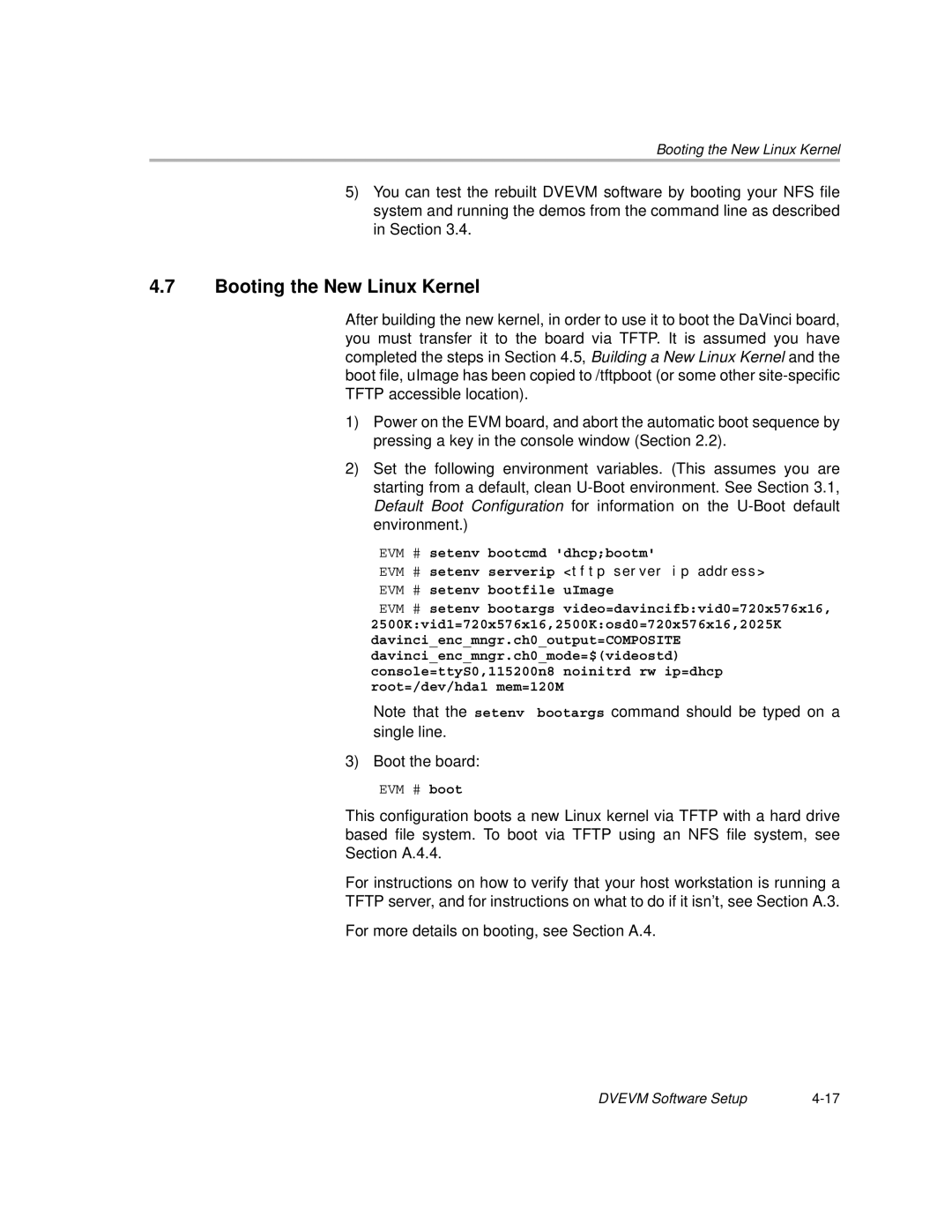Booting the New Linux Kernel
5)You can test the rebuilt DVEVM software by booting your NFS file system and running the demos from the command line as described in Section 3.4.
4.7Booting the New Linux Kernel
After building the new kernel, in order to use it to boot the DaVinci board, you must transfer it to the board via TFTP. It is assumed you have completed the steps in Section 4.5, Building a New Linux Kernel and the boot file, uImage has been copied to /tftpboot (or some other
1)Power on the EVM board, and abort the automatic boot sequence by pressing a key in the console window (Section 2.2).
2)Set the following environment variables. (This assumes you are starting from a default, clean
EVM # setenv bootcmd 'dhcp;bootm'
EVM # setenv serverip <tftp server ip address>
EVM # setenv bootfile uImage
EVM # setenv bootargs video=davincifb:vid0=720x576x16, 2500K:vid1=720x576x16,2500K:osd0=720x576x16,2025K davinci_enc_mngr.ch0_output=COMPOSITE davinci_enc_mngr.ch0_mode=$(videostd) console=ttyS0,115200n8 noinitrd rw ip=dhcp root=/dev/hda1 mem=120M
Note that the setenv bootargs command should be typed on a single line.
3) Boot the board:
EVM # boot
This configuration boots a new Linux kernel via TFTP with a hard drive based file system. To boot via TFTP using an NFS file system, see Section A.4.4.
For instructions on how to verify that your host workstation is running a
TFTP server, and for instructions on what to do if it isn’t, see Section A.3.
For more details on booting, see Section A.4.
DVEVM Software Setup |
